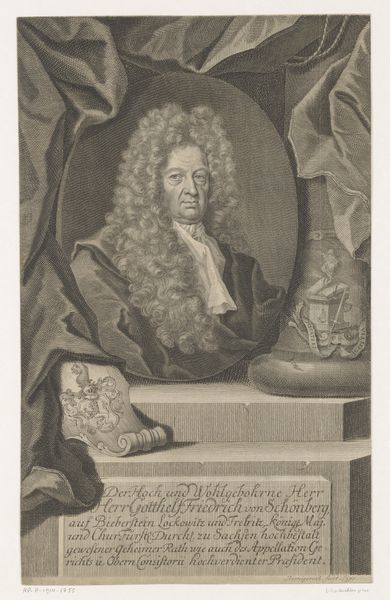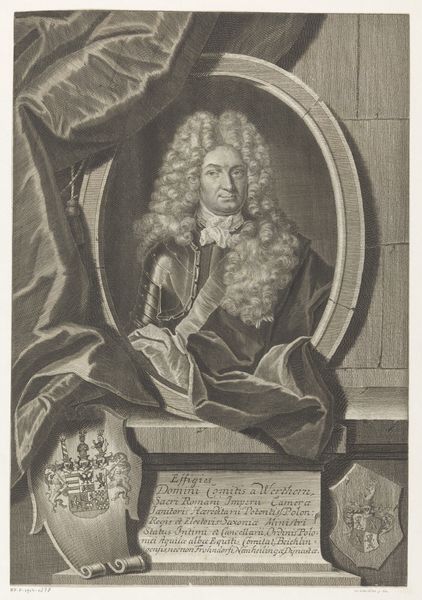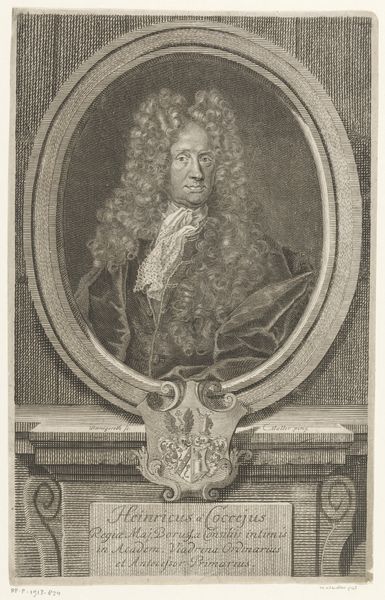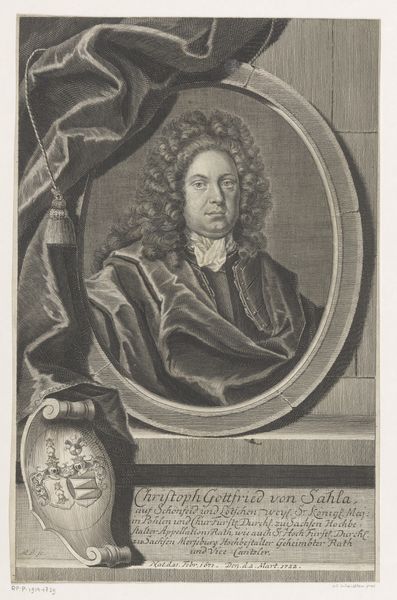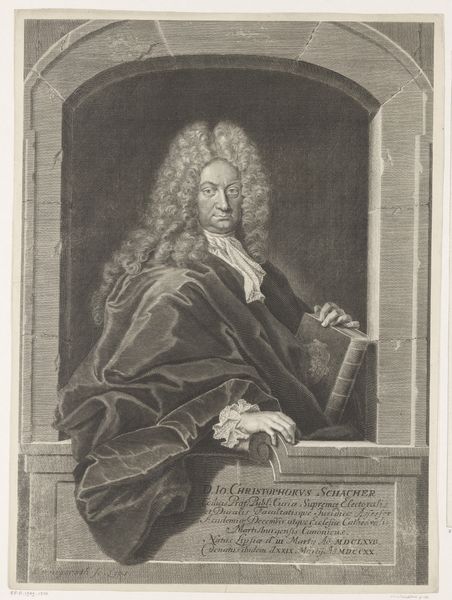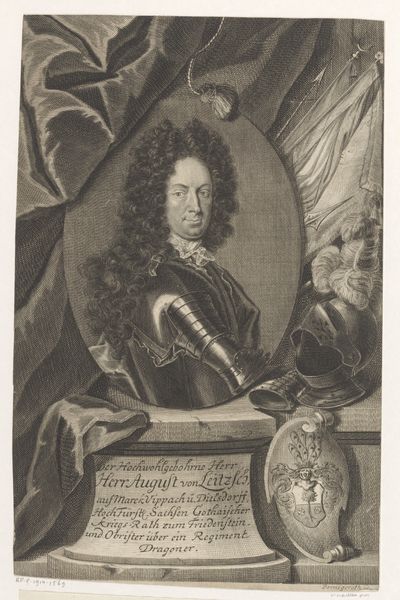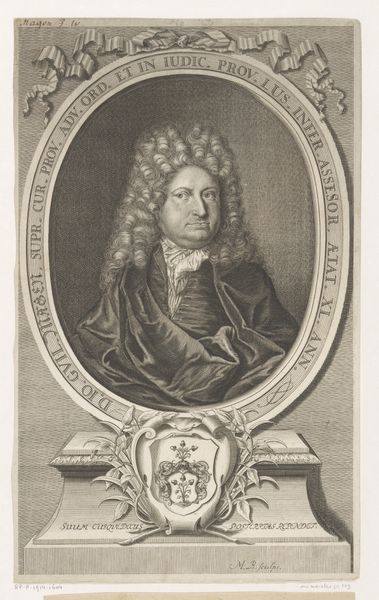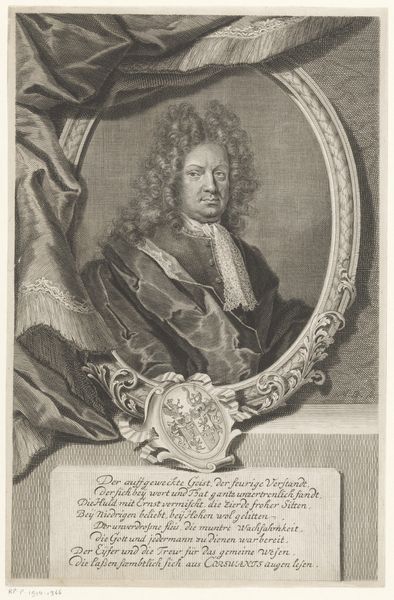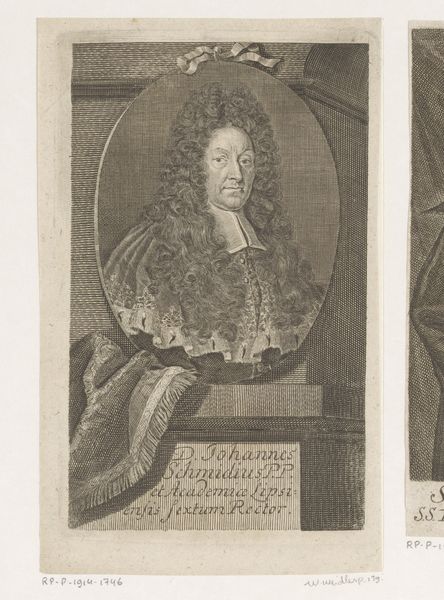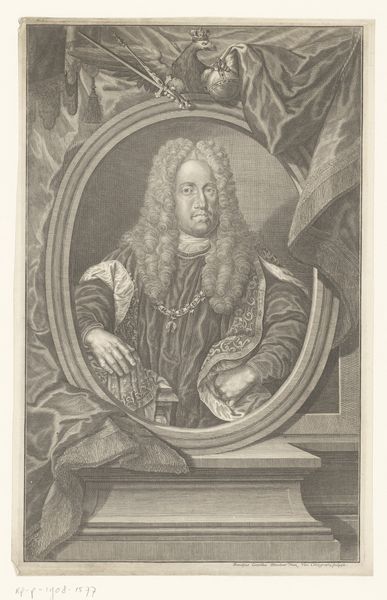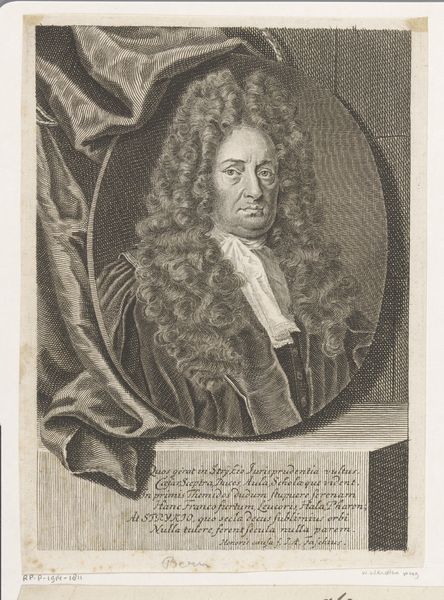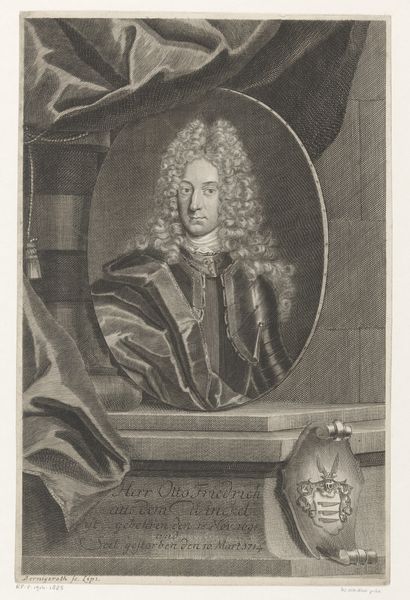
engraving
baroque
old engraving style
line
history-painting
engraving
Dimensions: height 302 mm, width 202 mm
Copyright: Rijks Museum: Open Domain
Editor: This engraving, titled "Portret van Joachim Ludolph von Veltheim" by Martin Bernigeroth, created sometime between 1680 and 1733, is quite striking. It's all about texture, isn't it? What really stands out is how the material is rendered— the flowing wig, the velvet robes, the stone plinth... what can you tell me about this from your perspective? Curator: It's a potent example of Baroque visual rhetoric rooted in production. Bernigeroth is showing not only *who* von Veltheim is but *how* status is constructed through material culture. The engraving allows us to examine how portraits of the wealthy, usually commissions involving expensive materials, were reproduced through this specific medium, thereby widening their circulation and impact in a burgeoning print market. Note the painstaking rendering, indicative of long hours laboring with tools and acid to incise lines in metal. The labor invested mirrors the sitter’s own claims to importance. Editor: So, the engraving itself becomes a commodity that signifies status? It's not just about the portrait; it's about the process of its creation? Curator: Precisely. The meticulous details, the very act of producing such a finely wrought image for wider consumption, underscores von Veltheim's position. How is labour related to luxury, and, luxury related to the control and distribution of capital? Moreover, engraving flattens the social hierarchy a little by reproducing such imagery outside elite networks that control production. Editor: It’s interesting to consider the material production as a form of social commentary or dissemination of status. Curator: Exactly. Looking at it this way exposes power structures made visible through material objects and techniques of reproduction, not just in the subject depicted. Editor: I never considered how much labor was behind this single engraving, or the broader reach it allowed the sitter! Thanks! Curator: My pleasure. Examining art through its material production reveals so much about social relations, then and now.
Comments
No comments
Be the first to comment and join the conversation on the ultimate creative platform.
